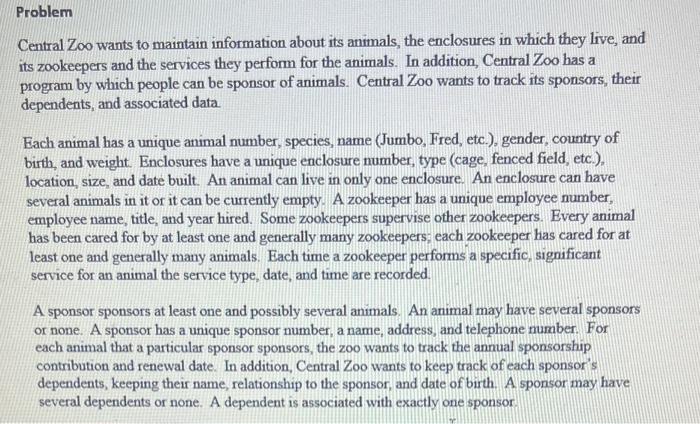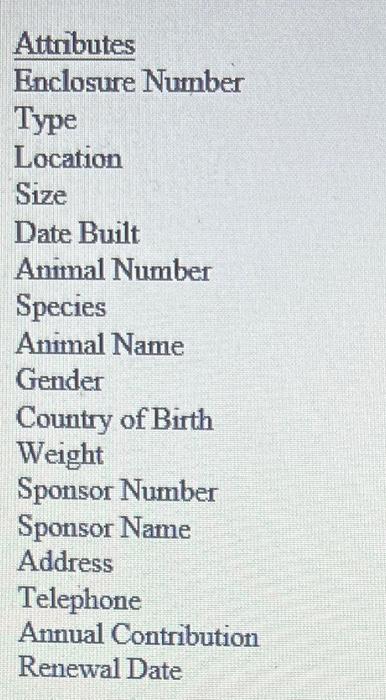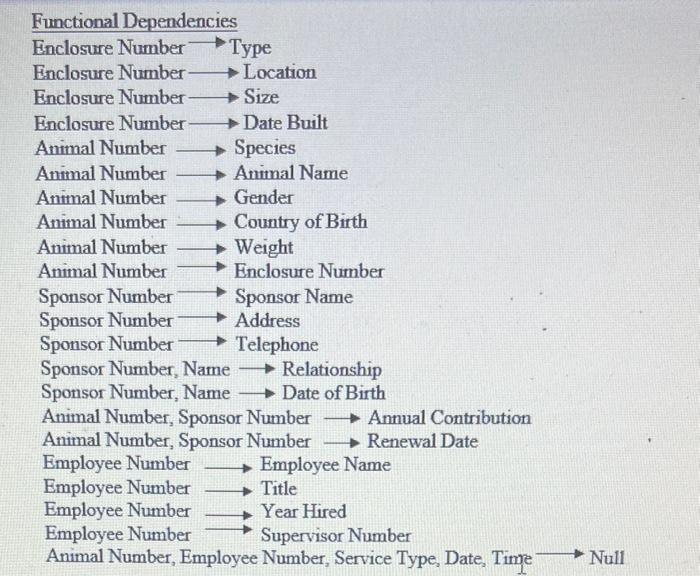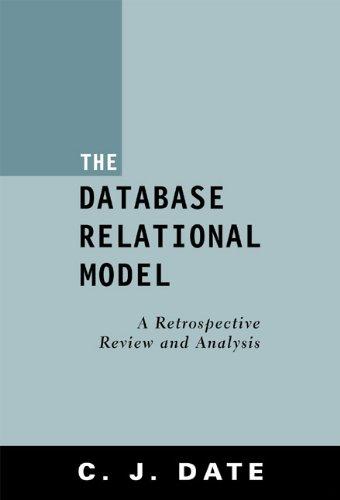Central Zoo wants to maintain information about its animals, the enclosures in which they live, and its zookeepers and the services they perform for the animals. In addition, Central Zoo has a program by which people can be sponsor of animals. Central Zoo wants to track its sponsors, their dependents, and associated data. Each animal has a unique animal number, species, name (Jumbo, Fred, etc.), gender, country of birth, and weight. Enclosures have a unique enclosure number, type (cage, fenced field, etc.), location, size, and date built. An animal can live in only one enclosure. An enclosure can have several animals in it or it can be currently empty. A zookeeper has a unique employee number, employee name, title, and year hired. Some zookeepers supervise other zookeepers. Every animal has been cared for by at least one and generally many zookeepers; each zookeeper has cared for at least one and generally many animals. Each time a zookeeper performs a specific, significant service for an animal the service type, date, and time are recorded. A sponsor sponsors at least one and possibly several animals. An animal may have several sponsors or none. A sponsor has a unique sponsor number, a name, address, and telephone number. For each animal that a particular sponsor sponsors, the zoo wants to track the annual sponsorship contribution and renewal date. In addition, Central Zoo wants to keep track of each sponsor's dependents, keeping their name, relationship to the sponsor, and date of birth. A sponsor may have several dependents or none. A dependent is associated with exactly one sponsor. Attributes Enclosure Number Type Location Size Date Built Animal Number Species Animal Name Gender Country of Birth Weight Sponsor Number Sponsor Name Address Telephone Annual Contribution Renewal Date Employee Number Employee Name Title Year Hired Service Type Date Time Name Relationship Date of Birth Functional Dependencies Enclosure Number Type Enclosure Number Location Enclosure Number Size Enclosure Number Date Built Animal Number Species Animal Number Animal Name Animal Number Gender Animal Number Country of Birth Animal Number Weight Animal Number Enclosure Number Sponsor Number Sponsor Name Sponsor Number Address Sponsor Number Telephone Sponsor Number, Name Relationship Sponsor Number, Name Date of Birth Animal Number, Sponsor Number Annual Contribution Animal Number, Sponsor Number Renewal Date Employee Number Employee Name Employee Number Title Employee Number Year Hired Employee Number Supervisor Number Animal Number, Employee Number, Service Type, Date, Timpe Null Design a well-structured relational database for the Central Zoo environment using the data normalization technique. Progress from first to second normal form and then from second to third normal form justifying your design decisions at each step based on the rules of data normalization











